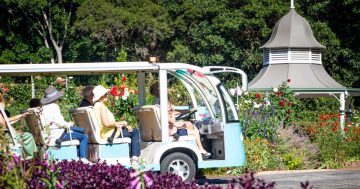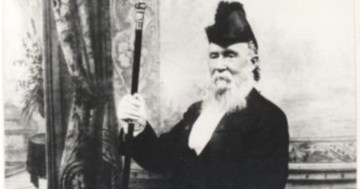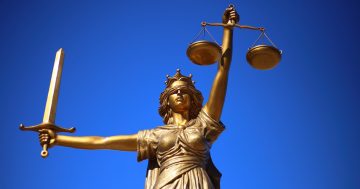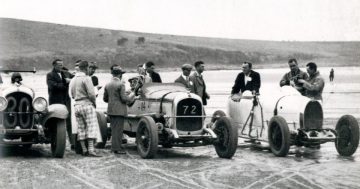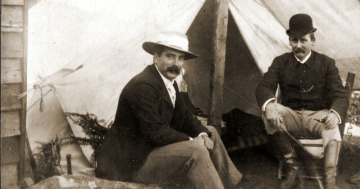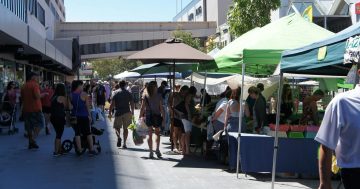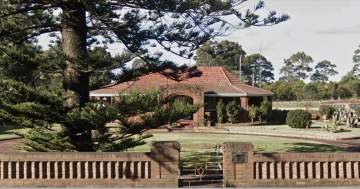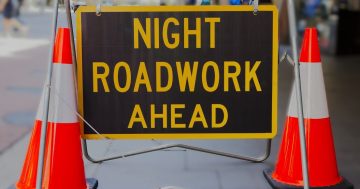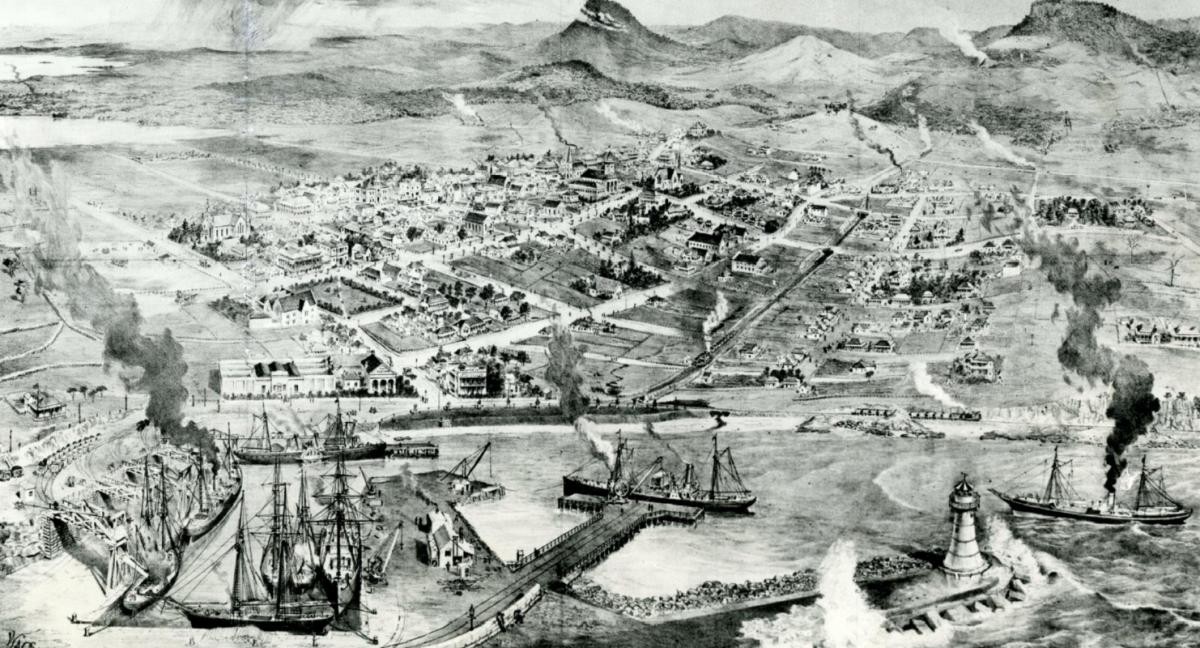
The Mt Keira Coal Tramway, depicted by artist William Clarson in 1887, ran under some of Wollongong’s streets to the harbour. Photo: Supplied.
The tender for the excavations necessary to form the rail line of the route for the Mount Keira Coal Tramway was won by the locally well-known Benjamin Rixon.
But it had actually taken an act of the NSW Parliament for the Mount Keira Mining company to even be allowed to resume part of Charles Throsby Smith’s 300-acre Wollongong land grant for construction of the rail line so close to the centre of Wollongong and extending from the mine to the jetty at Belmore Basin.
Despite receiving monetary compensation, however, Smith (the so-called “Father of Wollongong”) was not a happy chappy: “The Mount Keira Tramway Company required a certain portion of my land, and having obtained an act of parliament, they had taken it. In forming the tramway, the company had made a bridge connecting the adjacent lands through Church Street. The approaches to that bridge were incline planes, and on the north side the bridge, was inapproachable in wet weather.”
Smith also complained that the completed road over the bridge at Church Street was not the one that Smith claimed had been a route he was previously accustomed to use.
Smith argued the line of road was dangerous since a quantity of stone had been placed on each side of the bridge and the mining company had also filled up the approaches to Church Street with stone.
Smith further claimed his horse (“a quiet one”) took fright there, and refused to cross it. At that place Smith calculated the rail cutting to be 25 feet (7.5 m) deep.
But, despite offering to pay half the cost for the kind of bridge he desired, Smith had no luck in court.
So by May 1861, the rail line for the Mount Keira Coal Tramway was said to be complete and a Mr Benjamin Faucett was credited as the man who had possessed sufficient engineering skills to have made it all happen.
But it only took until July 1861 for the tramway to claim its first victim: “On Tuesday last a cow belonging to Mr McAra, of the Brighton Hotel, happening to stray upon the Mount Keira tramway, was run over by the leading coal trucks, and so severely injured, that she died within a short time after the accident.”
By January 1879, specially constructed Mount Keira Coal Tramway rolling stock was purchased from England and each of the initial delivery of 17 tramway wagons was able to carry six tons of coal.
Pulling such weights was no easy task and so iron horsepower was now deemed necessary. It duly arrived in February 1879: “The locomotives for the Mount Keira tramway arrived here, per the steamer Havilah, yesterday afternoon, and appear, to an unprofessional eye at least, to be very fine specimens of their class. The wheels, of which there are six to each locomotive, arrived a few days ago. For the first time in their history, therefore, Wollongong and the slopes of Mount Keira are likely to hear the snort of the iron horse in their midst before long.”
In 1883 and 1884 the complaints about the tramway increased and a greater number of the Wollongong townspeople began to publicly express grievances about the neglected condition of the crossings of the Mount Keira tramway.
Alderman Franklin directed attention to the awkward and dangerous state of the Keira Street crossing over the tramway, which he said was “neither in accordance with the act under which that tramway was constructed, nor suitable to the altered state of the town since then as regarded population and traffic”.
Franklin also declared that “it is a monstrous thing that after the many appeals from all sides, couched in temperate and courteous terms, this unsightly and dangerous state of things should have been permitted to exist so long”.
And when the main South Coast railway line opened in 1887, just a year before William Clarson (also spelled as Clarsen) set to work on his magnificent panoramic image of central Wollongong, the Mount Keira Tramway now needed another bridge crossing for the trains on the newly opened main South Coast rail line to get to the main Wollongong Station.
And yet, as can be seen in William Clarson’s fabulous 1887 artwork, the steam trains also still continued to travel under both Church and Keira streets.
So by 1889 the NSW Government had to pass the “Mount Keira Tramway Acquisition Bill” in order to try to come up with a more satisfactory solution to the problems the 1860 Mount Keira tramline had created. Royal assent was given to the acquisition bill in July 1889.








